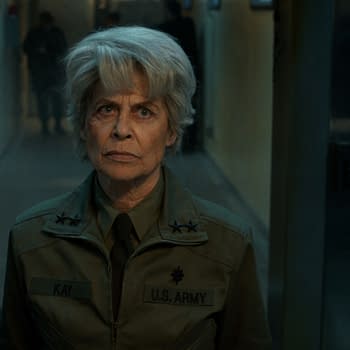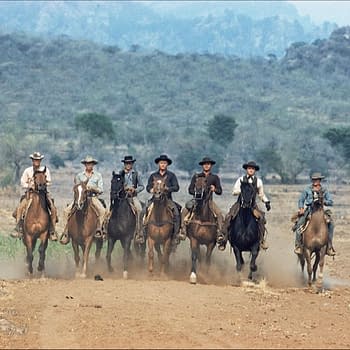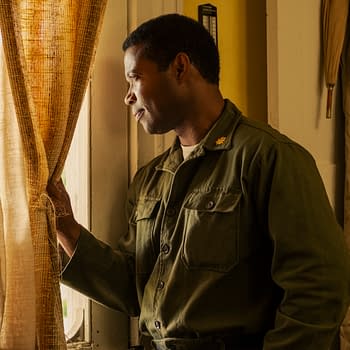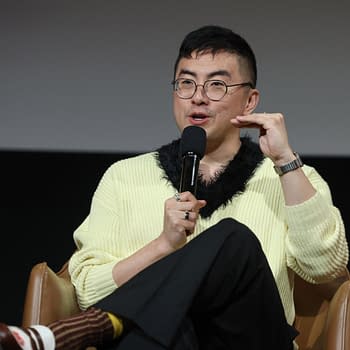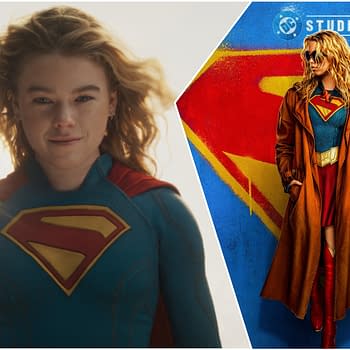Posted in: Cobra Kai, Netflix, TV | Tagged: cobra kai, Hiro Koda, Jahnel Curfman, martin kove, Ralph Macchio, stranger things, stunt coordinator, william zabka
Cobra Kai Stunt Coordinators Break Down Fight Sequences: Interview
It's hard to fathom the number of hours it took to plan all the fight choreography on such a series like Netflix's Cobra Kai. Given the series' success, the hard work has paid off in spades. I had the opportunity to talk with Hiro Koda and Jahnel Curfman, who worked on several other projects together along with the series. Koda's won an Emmy and scored five additional nominations throughout his career. Curfman was also nominated with Koda in 2019 for their work in Cobra Kai, and she won a SAG Award for the ensemble work for Avengers: Endgame (2020). Recently, the Netflix series was nominated for a SAG for their stunt work. It's been a long journey for the couple since their work on show from season one.
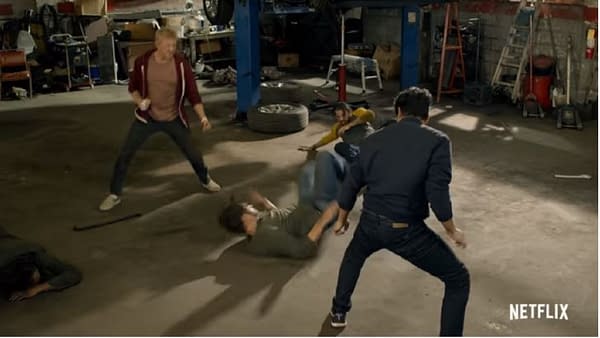
"It started out with a certain pace and tone," Curfman said. "I would say that season two, I think all of us could feel the increase of not only the amount of action but also the expectation of the intensity of the action as well." Following the initial All Valley Karate Tournament at season one's conclusion, the stunt work really upped the ante with the high school-wide brawl at the next season finale and the recent finale at the LaRusso home. "When we did the school fight, we were shooting at a college in Atlanta," she said. "The only time we could go there to shoot was on the weekend. The scheduling of that was a little difficult. However, with the LaRusso house, that's actually a set on our stages that we shot Cobra Kai at. In that sense, it made it a lot easier because we had full access to the set seven days a week."
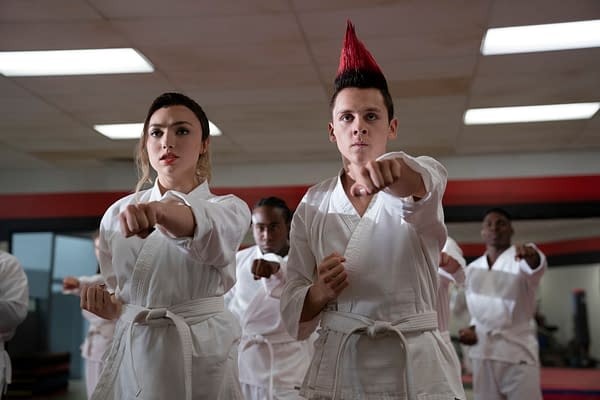
Koda points out the season three LaRusso home fight didn't go as originally planned. "At the LaRusso house, the scene was actually supposed to take place in the backyard of Miyagi-do," he said. "We had a completely different sequence put together. Weather kind of hit us and changed the schedule. It's like 'let's put it at the LaRusso house,' so everything had to change. It ended up being a lot more fun shooting inside the house than outside at the Miyagi-do dojo." Most of the stunt work was done by the actors themselves, with most spending time training in martial arts inside and outside the series. "In those two [finale] sequences, it was about 90 percent cast," Koda said. "There were doubles there worked in the sequence, and they were brought in what we call a Texas switch. We did it on camera while they were shooting so that you couldn't tell that there was a switch. There were certain moves where someone would hit harder on the ground that required a stunt person. We incorporated that into the choreography with a camera move to make sure we could use a double and pick it back up with the real person back in it. There were a few doubles in there; I don't remember how many were used. The actors did the majority of the work."
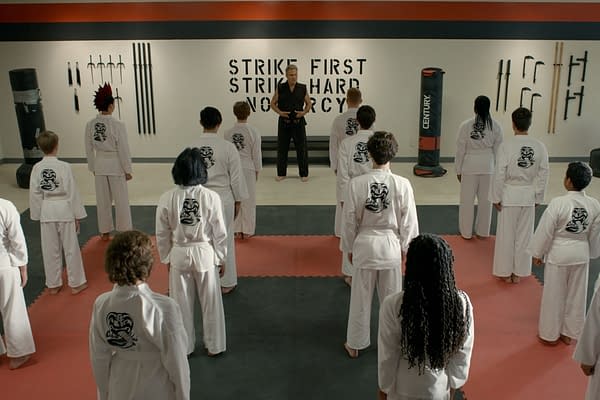
Koda and Curfman were meticulous about making sure each character's fighting style was personalized and distinct. "We prepped it and choreographed it early in the time before," Koda said. "We developed each and every one of the character's fight styles. We had the same stunt doubles from previous seasons, so we know how they work. Stunt performers always kept available. The only time we would change is because of some logistics issue or location problem, like there was something that was there before, but later wasn't. We had to change it up on the fly." Transitioning the training from one space to another on the set provided its own challenge. "We have a core stunt who come into work with, so we have a lot of bodies to choreograph on," Curfman said. "It is always slightly more difficult when you have more elements or certain space. A lot of times, we'll choreograph in our training dojo, and then we get the actual space we get into, like the school or the house. It's like we have all this space, and now we have to get it to move. So, where can we tweak and make adjustments? We had one sequence between Tory (Peyton List) and Sam (Mary Mouser), but then we take it up the stairs [at the school]. You also have to be more creative when it comes to being a 2-on-1, a 2-on-2, or even a 3-on-1 as opposed to just two people versus each other." Curfman doubled for List.
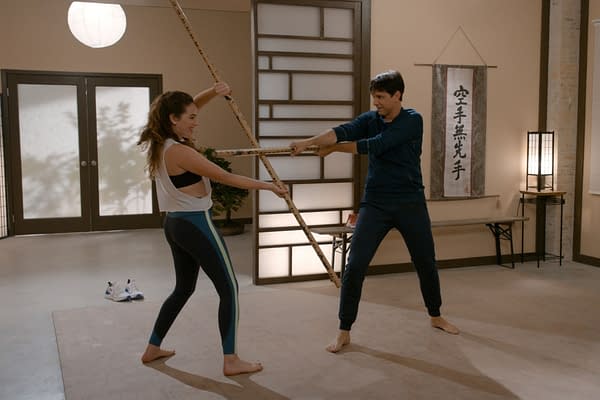
When it came to working with the actors, Koda said the seasoned veterans like Ralph Macchio and William Zabka, who played Daniel LaRusso and Johnny Lawrence, respectively, are as quick studies as the younger cast. "They all have their own process on how they time and remember the choreography," he said. "The toughest challenge for us is Martin Kove (who plays John Kreese). He is a bit older, and getting him through the choreography. His take is a little more timed. He works so hard. He's probably harder on himself than anybody else. He takes a little bit longer than everybody else. Everyone learns at their own pace."
Koda and Curfman also work on another popular Netflix series, Stranger Things, which they contend is its own process given the nature of the series. "Prep work varies depending on the show," Koda said. "With Cobra Kai, there are a lot of fights, martial arts, and a lot of choreography with the time it takes to do all of that. When I do Stranger Things, it's completely different. There are no martial arts, and there are a few bit of fights with some wirework. Our approach towards them is the same. We end up brainstorm with our stunt team with planning. We end up shooting a whole sequence of action and cut it together so they have a blueprint of what we'll do on the day." Koda said COVID protocols while filming Stranger Things haven't really altered how they do things as a stunt team.
Unfortunately, their stunt team isn't involved with Cobra Kai's fourth season that's currently shooting; according to Curfman stated, "They decided to go a different direction." All three seasons are available to stream on Netflix.






